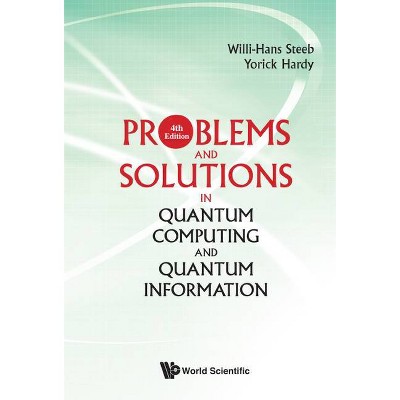Learn Quantum Computing with Python and IBM Quantum Experience - by Robert Loredo (Paperback)

Similar Products
Products of same category from the store
AllProduct info
<p/><br></br><p><b> About the Book </b></p></br></br>This book provides you with a step-by-step introduction to quantum computing using the IBM Quantum Experience platform. You will learn how to build quantum programs on your own, discover early use cases in your business, and help to get you or your company equipped with quantum computing skills.<p/><br></br><p><b> Book Synopsis </b></p></br></br><p><strong>A step-by-step guide to learning the implementation and associated methodologies in quantum computing with the help of the IBM Quantum Experience, Qiskit, and Python that will have you up and running and productive in no time</strong></p><p><br></p><p><strong>Key features</strong></p><p><br></p><ul><li>Determine the difference between classical computers and quantum computers</li><li>Understand the quantum computational principles such as superposition and entanglement and how they are leveraged on IBM Quantum Experience systems</li><li>Run your own quantum experiments and applications by integrating with Qiskit</li></ul><p><br></p><p><strong>Book Description</strong></p><p><br></p><p>IBM Quantum Experience is a platform that enables developers to learn the basics of quantum computing by allowing them to run experiments on a quantum computing simulator and a real quantum computer. This book will explain the basic principles of quantum mechanics, the principles involved in quantum computing, and the implementation of quantum algorithms and experiments on IBM's quantum processors.</p><p><br></p><p>You will start working with simple programs that illustrate quantum computing principles and slowly work your way up to more complex programs and algorithms that leverage quantum computing. As you build on your knowledge, you'll understand the functionality of IBM Quantum Experience and the various resources it offers. Furthermore, you'll not only learn the differences between the various quantum computers but also the various simulators available. Later, you'll explore the basics of quantum computing, quantum volume, and a few basic algorithms, all while optimally using the resources available on IBM Quantum Experience.</p><p><br></p><p>By the end of this book, you'll learn how to build quantum programs on your own and have gained practical quantum computing skills that you can apply to your business.</p><p><br></p><p><strong>What you will learn</strong></p><p><br></p><ul><li>Explore quantum computational principles such as superposition and quantum entanglement</li><li>Become familiar with the contents and layout of the IBM Quantum Experience</li><li>Understand quantum gates and how they operate on qubits</li><li>Discover the quantum information science kit and its elements such as Terra and Aer</li><li>Get to grips with quantum algorithms such as Bell State, Deutsch-Jozsa, Grover's algorithm, and Shor's algorithm</li><li>How to create and visualize a quantum circuit</li></ul><p><br></p><p><strong>Who this book is for</strong></p><p><br></p><p>This book is for Python developers who are looking to learn quantum computing and put their knowledge to use in practical situations with the help of IBM Quantum Experience. Some background in computer science and high-school-level physics and math is required.</p>
Price History
Price Archive shows prices from various stores, lets you see history and find the cheapest. There is no actual sale on the website. For all support, inquiry and suggestion messages communication@pricearchive.us




















